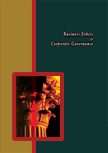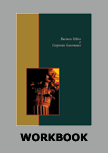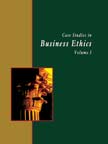Rio Tinto: The Mining Giant Pollutes Indonesia's Environment




|
|
ICMR HOME | Case Studies Collection
Case Details:
Case Code : BECG030
Case Length : 16 Pages
Period : 2003
Pub. Date : 2003
Teaching Note :Not Available
Organization : Rio Tinto
Industry : Mining
Countries : USA
To download Rio Tinto: The Mining Giant Pollutes Indonesia's Environment case study (Case Code:
BECG030) click on the button below, and select the case from the list of available cases:

Price:
For delivery in electronic format: Rs. 400 ;
For delivery through courier (within India): Rs. 400 + Rs. 25 for Shipping & Handling Charges
»
Business Ethics Case Studies
» Case Studies Collection
» ICMR Home
» Short Case Studies
» View Detailed Pricing Info
» How To Order This Case
» Business Case Studies
» Case Studies by Area
» Case Studies by Industry
» Case Studies by Company

Please note:
This case study was compiled from published sources, and is intended to be used as a basis for class discussion. It is not intended to illustrate either effective or ineffective handling of a management situation. Nor is it a primary information source.
|
|
<< Previous
Excerpts Contd...
Will Rio Tinto Change for the Better?
In 2003, reacting to the wide spread criticism against the company, Rio Tinto said in its 'Social and Economic Review Report of 2002', "We have three long-term goals: Zero injuries and elimination of occupational injury and illness; zero infringment of health, safety and environment regulations; and zero spills to the environment."
|
The company reportedly agreed to review its statement of business practice 'The Way We Work' and bring out a 'Mining Minerals and Sustainable Development report' in 2003. The company set a list of targets that it proposed to achieve in 2003 regarding environmental concerns. (Refer Table II) The company had reportedly developed drafts for environmental standards and conducted internal workshops in the first half of 2003 to discuss the viability of the targets. The implementation of the standards was due to commence in 2004 and its review was to be conducted in mid-2005. Rio Tinto is not the only company in the global mining industry that faces such problems. To all the critics and Rio Tinto
bashers, one might say that environmental damage is inherent in mining, smelting
and associated activities.
|
|
Indeed, the company has even been taking steps to minimize the adverse effects of its activities.
Even if the company makes attempts to rehabilitating the mining sites, the fact remains that rehabilitation exercises of such magnitude are complex and difficult.
Moreover, restoring the eco-systems that had taken millions of years to evolve seems to be a Herculean task.
Till a balanced method is adopted for conducting mining activities by companies such as Rio Tinto in a proactive manner, the damage being done to the environment, the community, and the companies themselves would in all probability continue unabated.
Exhibits
Exhibit I: Poboya Community's Letter to the Indonesian Government
Exhibit II: Rio Tinto - World Wide Operations
Exhibit III: Rio Tinto - Environmental Damages Caused Outside Indonesia
Exhibit IV: Rio Tinto - A Note on Various Controversial Business Practices
Exhibit V: Rito Tinto - The Way We Work
|
|





